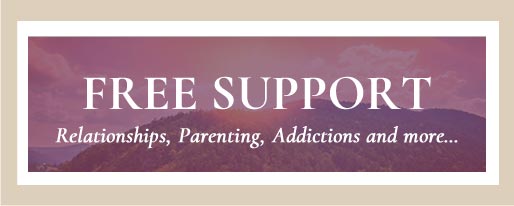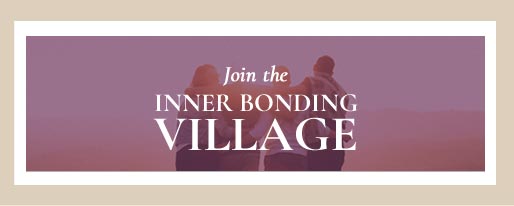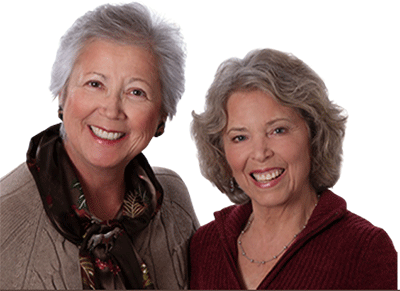Through working with clients who grew up in fairly healthy environments, it’s become increasingly clear to me that the blueprints of beliefs and experiences we absorb about love are not only connected to how we were directly treated by our parents, but also by how they treated each other and, perhaps even more importantly, how they treated themselves. For example, if we witnessed a mother who suffered from worry and anxiety and never addressed it directly, it’s quite likely that the worry and anxiety would have been passed down to one or more of her children. We often live the unlived lives of our parents, so if there’s shadow work to be done in another generation, you may find yourself the recipient of that work. And while it may not appear to be a gift, when you understand anxiety, worry, panic, or any other debilitating manifestation of fear as a portal into wholeness, the burden is transformed into a blessing.
A secondary and common cause of relationship anxiety is childhood bullying. I used to be surprised by the number of clients who would share stories about the ways in which grade school peers (including siblings) would taunt, tease, and torture them, but now it’s one of the first questions I ask when a client presents with the fear of intimacy. If your own peers, which will one day constitute the age group from which you will choose a marriage partner, tell you repeatedly that you’re ugly, stupid, worthless and any other number of ruthless cruelties, doesn’t it make sense that your self-esteem would plummet and you would develop a belief that says, “I’m not worthy of love”?
And then there are the ways in which we may never understand where the resistance to real love originates. I have clients who say, “I grew up a loving family and have had good relationships in my life. This just doesn’t make any sense,” to which I respond, “It doesn’t really matter where this came from. The fact is that it’s here now and either you move toward the resistance or you run and end up alone. No matter where this came from, it’s an opportunity to grow in your ability to love. Do you want to accept this challenge?”
In the end, fear is fear, and we either accept the task of working with it consciously and diligently or we walk away from loving, solid relationships with the erroneous belief that, “It just didn’t feel right. If it was right, I wouldn’t have to work so hard.” But if you have a love blueprint that says, “Love isn’t safe” or “This will only end in heartbreak and I can’t handle the grief” or “I’m not worthy of love,” massive amounts of compassionate attention are needed to break down these beliefs and replace them with the truth. And one of the most effective ways of creating a new love script is to take the risk, slowly and carefully if needed, of loving the one you’re with.
I’m re-reading a beautiful book called When Love Meets Fear by David Richo. In a section called “Letting Love In” (p. 135) he writes:
Our work on our fear follows a simple path:
admit you are afraid,
allow yourself to feel the fear fully,
act as if fear were not getting in your way.
Allow the one who loves you – and whom you want to love but cannot – to draw an inch closer for a minute longer than you can stand… My desire to be loved is stronger than my fear of it. Love does that; it puts you in a position that makes you no longer so careful about limits – my stony limits that no longer hold love out.
This work involves a willingness to be awkward, to be amateur. To feel the fear and still let yourself be loved is doing the very opposite of what the wall does. The wall protects the fear. Now you leave the fear unprotected, allowing yourself to feel it, thereby acting as if you were not feeling it. The daily moment and the daily inch impacts exponentially as time goes by because you are teaching your body one cell at a time: “You do not have to be so afraid anymore.”
Your partner hugs you. You start shivering and scrunching up. You just cannot stand it, and, to get away, you say: “You know, I have to get to work, I can’t stay right now, I have to leave.” To work on that fear, you let yourself stay in the embrace for one more minute than you can stand. It is awkward and feels painful, but in that one minute your body is finding out: “You can stay and still survive.” A message of safety has gone through every cell. Next time you add another minute. And before you know it you can hug as long as you want. Repeated acts of love diminish the fear response both in ourselves and in others. When each partner risks doing something one more minute than each can stand, they are standing together, i.e., intimate.
Years into my marriage, I still have to work at the art and skill of receiving love. My cellular blueprint says, “Love isn’t safe. People are vampires and want to steal my life-force,” which means that a habitual wall of resistance lives inside of me that can sometimes emerge when my husband comes close. I don’t always have to work at it; I’ve been at it long enough that there are long stretches of time when I experience a “free ride,” when the fluidity of giving and receiving moves freely between us. But during other times – perhaps when I’m tired, overextended, depleted, hormonal, or perhaps having nothing to do with these factors – I feel the resistance and have to consciously work at moving toward instead of away and saying to myself, “This is fear. I’m going to feel the fear and take loving action anyway.”
Somebody less-versed in the architecture of the anxious mind would probably respond to this response to fear with,”It shouldn’t have to be so hard. When the relationship is right you don’t have to work like this,” to which I respond, “I know in the bones of my experience from being in relationships with men who weren’t completely available for emotional intimacy that even when it ‘felt right’ and I didn’t have to work to move toward, it wasn’t a loving relationship. The ease was because there was never any real risk of my heart.” I can corroborate this statement from the thousands of people I’ve worked with over the years who say the same thing: with other partners who weren’t fully available, I never doubted and I always “knew” I loved him or her.
Love is a risk, and somewhere deep in our cells we all know this. But it’s also the reason why we’re here, and each time we find the courage and resolve to break down a brick of our fear walls, we taste the sweetness of the sweetest nectar available to our hearts, the love-nectar that gives meaning, richness, and fullness to our lives.
***
Sheryl Paul, M.A., has counseled thousands of people worldwide through her private practice, her bestselling books, her Home Study Programs and her websites. She has appeared several times on “The Oprah Winfrey Show”, as well as on “Good Morning America” and other top media shows and publications around the globe. To sign up for her free 78-page eBook, “Conscious Transitions: The 7 Most Common (and Traumatic) Life Changes“, visit her website at http://conscious-transitions.com. And if you’re suffering from relationship anxiety – whether dating, engaged, or married – give yourself the gift of the Conscious Weddings E-Course: From Anxiety to Serenity.
 Send this article to a friend
Send this article to a friend  Print this article
Print this article  Bookmarked 0 time(s)
Bookmarked 0 time(s)
| Related Articles |
|---|
| Can You Love Others? |
| Control, Helplessness, and Love |
| Engagement Anxiety Dismantled: Real Love versus Infatuation |
Comments
| Author | Comment | Date |
|---|---|---|
| Join the Inner Bonding Community to add your comment to articles and see the comments of others... | ||

Daily Inspiration
Do not be dismayed when you find yourself facing the same issues over and over. We all experience this - it is just different levels of the same soul's lessons. Each time, embrace the issues with compassion.
By Dr. Margaret Paul

 Share with Del.icio.us
Share with Del.icio.us Share with Digg
Share with Digg







